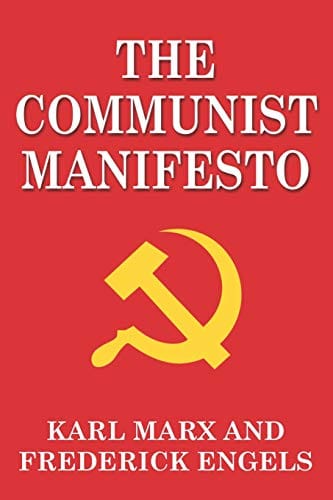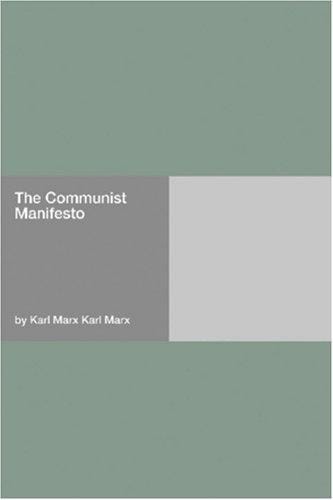Understanding The Communist Manifesto: Context, Themes & Legacy
Discover the origins, central ideas and modern relevance of The Communist Manifesto, Karl Marx and Friedrich Engels’ groundbreaking 1848 pamphlet.

Introduction
The Communist Manifesto, written by Karl Marx and Friedrich Engels and first published in 1848, remains one of the most influential political documents ever produced. Despite being barely 12,000 words long, the pamphlet has shaped revolutions, inspired social movements, and fueled debates about capitalism, class, and human liberation for more than 175 years. This article offers a concise but comprehensive guide to its historical background, core arguments, lasting impact, and ongoing relevance in the twenty-first century.
Historical Context
To understand the power of the Manifesto, it is essential to situate it in the turbulent Europe of the 1840s. Industrialization had accelerated class divisions; factory owners amassed fortunes while workers toiled in dangerous conditions for meager wages. Political power was still monopolized by monarchies and aristocracies, but a rising bourgeoisie demanded constitutional reforms, and a newly conscious working class began to organize. In 1847, shortly before the revolutions that swept Europe in 1848, the London-based Communist League tasked Marx and Engels with drafting a clear statement of its aims. The result was The Communist Manifesto, a call to arms for the international proletariat.
Influence of Previous Thought
Marx and Engels drew on German philosophy, British political economy, and French socialist tradition. Hegelian dialectics provided a method for analyzing change; Adam Smith and David Ricardo offered insights into labor and value; utopian socialists such as Saint-Simon sketched visions of cooperative societies. The Manifesto fused these strands into historical materialism, asserting that material conditions and class struggle drive societal development.
Key Themes and Arguments
Class Struggle as the Motor of History
The opening line, “The history of all hitherto existing society is the history of class struggles,” sets the tone. Marx and Engels argue that every epoch is defined by conflicts between oppressor and oppressed, whether patrician and plebeian in Rome or lord and serf in feudal Europe. Capitalism, they say, pits the bourgeoisie, who own the means of production, against the proletariat, who possess only their labor power.
Capitalism’s Revolutionary Role
Paradoxically, Marx and Engels praise the bourgeoisie for revolutionizing society. By harnessing science, expanding markets, and demolishing feudal bonds, capitalism unleashed productive forces unprecedented in history. Yet its very dynamism creates crises—overproduction, unemployment, and social upheaval—that expose the system’s contradictions and prepare the ground for proletarian revolution.
Internationalism
“Workers of the world, unite!” is more than a slogan; it captures Marx’s belief that capitalism is a global system requiring a global response. The Manifesto stresses solidarity across national borders, arguing that workers share common interests regardless of language or culture.
The Abolition of Private Property
Marx and Engels do not call for the abolition of personal possessions but of bourgeois private property—factories, mines, and financial capital—that enables exploitation. They envision collective ownership of the means of production, leading to a classless society where “the free development of each is the condition for the free development of all.”
Structure and Style
The Manifesto is divided into four short chapters. The first outlines bourgeois and proletarian antagonisms; the second presents communist objectives; the third critiques rival socialist currents; and the fourth addresses existing opposition parties. Its fiery prose, vivid metaphors (from the famous “spectre haunting Europe” to the “icy water of egotistical calculation”), and brisk pacing make it as compelling as a political tract can be. Marx wanted ordinary workers, not just scholars, to grasp his message—and the Manifesto’s clarity reflects that intent.
Impact on Political Movements
Although initial print runs were modest, the Manifesto’s reputation grew alongside the labor movement. By the late nineteenth century it had become required reading for socialists and trade unionists across Europe and the Americas. In 1917, Vladimir Lenin cited it as inspiration for the Russian Revolution, and communist parties from China to Cuba treated it as a foundational text. Even outside explicitly socialist circles, its critique of inequality influenced welfare-state policies, progressive taxation, and labor protections in liberal democracies.
Critiques and Controversies
Critics charge that Marx underestimated the adaptability of capitalism, failed to anticipate a robust middle class, and ignored non-class sources of oppression such as gender and race. The authoritarian dictatorships that emerged in the name of communism in the twentieth century further tainted the Manifesto’s legacy. Supporters counter that Marx’s analysis remains valuable for exposing systemic exploitation and that distortions of his ideas should not be conflated with the ideas themselves.
Relevance in the 21st Century
Globalization, automation, and climate change have revived interest in Marx’s critique. Gig-economy workers face precarious employment, and wealth inequality rivals that of the Gilded Age. Movements like Occupy Wall Street and debates about universal basic income echo the Manifesto’s call for economic democracy. While few advocate wholesale abolition of markets today, many draw on Marx’s insights to argue for stronger labor rights, cooperative ownership models, and ecological planning.
How to Read The Communist Manifesto Today
Approach the text both historically and critically. Read it alongside contemporary analyses of capitalism to spot what holds up and what requires revision. Consider pairing it with biographies of Marx and Engels, studies of nineteenth-century Europe, and testimonies from workers. Discussion groups and annotated editions can help unpack dense passages and connect them to present-day issues.
Conclusion
The Communist Manifesto endures because it captures a fundamental truth: economic systems are not static—they are contested terrains shaped by human struggle. Whether one embraces, critiques, or seeks to reform its prescriptions, grappling with the Manifesto is indispensable for anyone interested in political theory, social justice, and the future of work. The “spectre” that haunted Europe in 1848 continues to provoke questions about power, ownership, and human dignity—questions that remain as urgent as ever.
